Have you been wondering how to tell if a vehicle has active fuel management? Active Fuel Management is formerly known as displacement on demand. It is a trademarked name for the automobile variable displacement technology from General Motors. It allows a V6 or V8 engine to “turn off” half of the cylinders under light-load conditions to improve fuel economy. Estimated performance on EPA tests shows a 5.5–7.5% improvement in fuel economy.
We see many people keep asking this question on many vehicle forums to find out the answer they need. So in this article, we are going to find out how you can say whether a vehicle has active fuel management or not.
Table of Contents
What Is Active Fuel Management?
Active fuel management is a system where a system inside your vehicle controls the fuel usage actively by doing some mechanical changes automatically inside the engine. So when a car has this management system installed, it can reduce fuel usage by up to 7% when driving.

How Does Active Fuel Management Work?
If you’re wondering how to tell if a vehicle has active fuel management? and how does active fuel management works? Let’s see when we talk about vehicles that have active fuel management, it is better to have a pretty good idea about how it works. In general, shutting off the intake and exhaust valves is the first step in deactivating cylinders. The hydraulic roller lifters are activated and deactivated by a solenoid control valve assembly indicated by pressure oil.
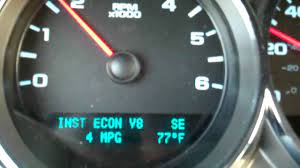
These lifters control the actual closing and opening of the exhaust and intake valves. When both valves are closed, the exhaust gas in the cylinders expands in one while decompressing in the other. During low-demand scenarios, this compression effectively maintains power. The exhaust valve is reopened to release the previous exhaust gas and allow a fresh cycle to begin if more power is required. Cylinders 1, 4, 6, and 7 on V-8 engines are turned off during this operation.
How To Tell If A Vehicle Has Active Fuel Management?
Below are the things which can tell you if your vehicle has active fuel management.
1. Car’s Name:-
Each vehicle can be identified by its name. By knowing the car’s name, you can tell if it has active fuel management. Certain General Motors cars have been identified as having the fuel management feature. They include Chevrolet Avalanche, Chevrolet Trailblazer, Chevrolet Impala, Chevrolet Suburban, and Chevrolet Tahoe.

So, if your car falls into this category, you don’t have to search further to know if it has active fuel management. Remember that this list is not exhaustive; hence you may have to visit the General Motor website to check if your car has this property.
2. V8/V4 Icon:-
You can also tell if a vehicle has active fuel management by observing the icon on the MPG DIC screen. If the vehicle has it, you will see either a V4 or V8 icon on the screen. The V4 will come on when the active fuel management is active. However, if the fuel management is inactive, you will see a V8 icon. The V8 icon also indicates the fuel economy at a particular time.
![]()
As such, it will change as driving conditions change. So, you will find that the change is significant when you move from a smooth road to a rough road. Therefore, by checking the vehicle’s manual to see if the car has this display, you will know if it has active fuel management.
3. Engine’s Number:-
Do you know that you can tell if your car has active fuel management by looking at the engine’s number? Well, an engine number can tell a lot about the vehicle. For instance, those cars designed for heavy lifting or harsh conditions will generally have a powerful engine. So, if you want to know if your vehicle has this feature, look at its engine number.

In most cases, engines such as 2.7L turbo, 5.3L V8, and 4.3L V6 will have active fuel management. You are probably wondering where you can find your car’s engine number! Don’t worry; open the front hood of your car and look at the engine’s casing.
4. Valley Cover:-
Another way of finding out if your car has active fuel management is by checking the appearance of the valley cover. If the valley cover is smooth, the vehicle does not have active fuel management. However, if the valley cover is ribbed on the top, it has this feature.
The valley cover is ribbed to allow active fuel management solenoids and electrical wires to fit in. This electrical connector can also be seen at the back of the engine; hence if you cannot access the valley cover to check it, you can check the engine’s back for such connectors.

5. Manufacture Date:-
The date the vehicle was manufactured plays a vital role in deciding if it has active fuel management. This feature came into existence after 2007; hence those cars manufactured before that year will not have this feature. Therefore, you shouldn’t waste your time checking non-GM cars to see if it has this feature. Check the sticker next to the driver’s seat to know when the vehicle was made. You can also learn its manufacture date by using its identification number.
6. Engine Block:-
If you’re wondering how to tell if a vehicle has active fuel management? Check out the engine block. If the engine block has oil towers and passages, the chance is high that the vehicle has this feature. You will only have to check if these oil towers and passages are functional. Now, this is pretty simple! You only have to feel the passages for oil pressure.
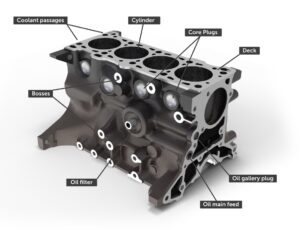
7. Special Camshaft:-
Since active fuel management works by turning off half of the engine cylinders to enhance fuel economy, the camshaft tends to get damaged quickly. It calls for a strong camshaft with features not there in camshafts used by vehicles that don’t have active fuel management. So, this can be another way of telling if your vehicle has the GM’s fuel economy feature.
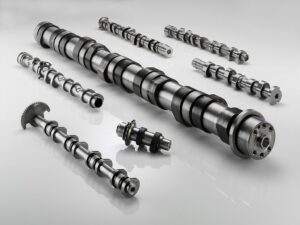
8. Special Lifters:-
You can also tell if the vehicle has active fuel management by checking the appearance of lifters in each cylinder. Usually, a vehicle with this feature has special lifters on its four cylinders, namely 1, 4, 6, and 7. These lifters are usually taller than others and have springs engraved on their top.
9. Oil Pressure Relief Pump:-
The function of the Oil pressure relief pump is to open when the engine’s pressure reaches a certain level. The engine pressure will go back to its optimal level when it does. An excessive engine pressure will damage the engine and the active fuel management system.

10. Powerful Fuel Pump:-
Since most vehicles with active fuel management are powerful, they must have a powerful fuel pump to pressurize the high volume of fuel coming from the engine. So, if you can check the features of the fuel pump, you can know if the car has a fuel management system. To do so, obtain the features of your car’s fuel pump and compare them with the characteristics of another car’s fuel pump.
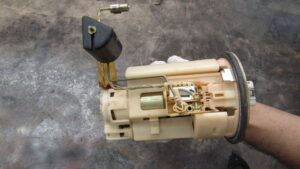
But in this case, the vehicle you are comparing your car to should have the feature in question. If the features of both cars are similar, your vehicle has GM’s fuel management property.
Frequently Asked Questions:-
Now it’s time to see some frequently asked questions related to the active fuel management such as what year did GM come out with AFM? does general motors still use AFM? etc.
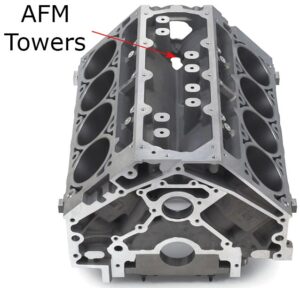
1. What Year Did GM Come Out With AFM?
In 2005, General Motors launched its Active Fuel Management cylinder deactivation technology.
2. Does General Motors Still Use AFM?
Due to the persistent worldwide microprocessor scarcity, General Motors is currently constructing the GMC Sierra 1500 pickup trucks and Chevy Silverado 1500 and without AFM and Dynamic Fuel Management (DFM) technology. The modification is planned to last through the 2021 model year.
3. When Did Chevy Stop AFM?
General Motors detailed a substantial adjustment to the 2021 5.3L L82/L84 engines with AFM and DFM in a note distributed to dealers this morning. Due to the global scarcity of semi-conductors, the business has opted to temporarily disable certain fuel-saving technologies on the 5.3L engines.
Conclusion:-
If you were wondering how to tell if a vehicle has active fuel management, you now have an answer. But in a snapshot, you can identify a vehicle with active fuel management by checking its name, manufacture date, engine number, engine cover, block, camshaft, filters, etc.
We hope the above-mentioned information will be helpful to all the readers. If anybody’s doubts persist feel free to comment in the comment section below. We’ll try to solve your doubts as soon as possible.



